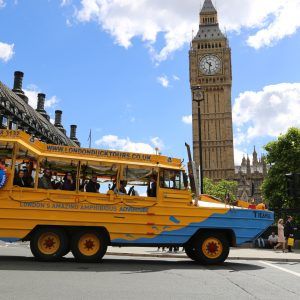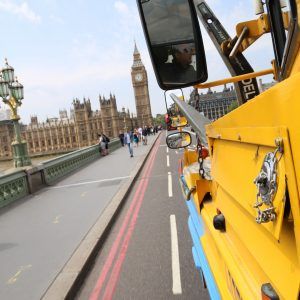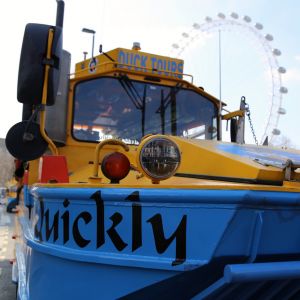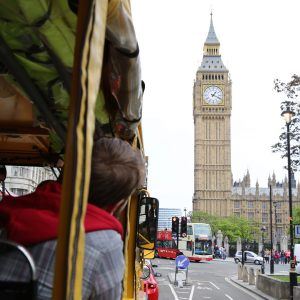London Duck Tours most favourite Corinthian column with a man on top, this 169ft 51m tall monument is a tribute to Admiral Horatio Nelson, who died in 1805 at the Battle of Trafalgar. The monument was constructed some 35 years after his death, from 1840-1843.
Designed by William Railton the original cost exceed £43,000. The actual statue of Nelson, by E H Baily, that tops the column, and the four lions to the base, by Sir Edwin Landseer, were only added in 1867. So a fitting tribute to a great British Hero, but one that took many decades and designers to complete.
The pedestal area features four relief panels cast entirely of captured French guns. They show key scenes from Nelson’s life – The Battle of Copenhagen, The Battle of the Nile, The Battle of Cape St Vincent and, of course, The Battle of Trafalgar.
Shorter in real life
Nelson’s column is over 14ft shorter than was historically believed. This was discovered during extensive restoration of the monument that took place in 2006.
Hip to be Trafalgar Square
The monument is the centrepiece of Trafalgar Square, dating from 1844, it is still London’s most famous square, and the official central point of London. Indeed, all official measurements from London are measured from the statue of Charles I, situated at the southernmost point of the square.
Previously, the area contained the stables and courtyards of the old Palace of Whitehall, which was subsequently lost to fire.
The square is very much used today as a centre for arts and culture. It’s the location for two of the best known galleries in the world – The National Gallery and National Portrait Gallery. It hosts numerous festivals, public demonstrations and protest, and is a gathering place for major sporting occasions, Royal Wedding celebrations and New Year festivities. The square is also the location of many top notch hotels, restaurants, and the beautiful St Martin in the Fields church, which hosts almost daily classical music concerts, some played just in candlelight for extra atmosphere and drama.



















